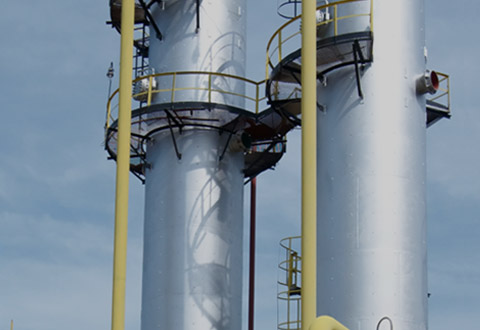
- Mobile Phone
- +8613931874955
- sales@cntcmetal.com
Understanding the Mechanics and Applications of Compression Springs in Engineering
Understanding Compression Springs Key Concepts and Applications
Compression springs are one of the most commonly used types of springs in mechanical applications. Designed to resist compressive forces, these springs exert a force opposite to the direction of compression, allowing them to store and release energy efficiently. This article delves into the basics of compression springs, including their design, materials, applications, and the technical parameters involved.
What Are Compression Springs?
Compression springs are helical springs that compress when axial loads are applied. They are typically made from a coiled wire or bar that is wound in a helical shape and is capable of absorbing energy and returning to its original shape when the force is removed. Their operation is based on Hooke's law, which states that the force exerted on a spring is directly proportional to the displacement of the spring, within its elastic limit.
Design Considerations
The design of a compression spring involves several critical parameters
1. Wire Diameter The thickness of the wire impacts the strength and rigidity of the spring. Thicker wires make stronger springs, while thinner wires allow for more flexibility.
2. Coil Diameter This is the diameter of the circle formed by the coils. A larger coil diameter allows for greater compression without excessive force.
3. Number of Active Coils This factors into the spring's stiffness and load-bearing capacity. More active coils usually result in lower spring rates.
4. Spring Rate Defined as the amount of force required to compress the spring by a unit length (commonly expressed in pounds per inch or Newtons per millimeter). The spring rate is a crucial metric for application-specific design.
5. Free Length This is the length of the spring when it is not under load. It plays a role in determining how much compression can occur during operation.
6. End Configurations The ends of a compression spring can be ground flat, open, or closed, depending on the application requirements. This affects how the spring fits into a mechanical assembly.
Materials Used
Compression springs are typically made from high-carbon steel, stainless steel, or other alloys. Different materials impart various properties to the springs
compression springs pdf

- High-Carbon Steel Provides good strength and elasticity, making it ideal for applications requiring high load capacity.
- Stainless Steel Offers excellent corrosion resistance, making it suitable for environments where exposure to moisture or chemicals is a concern.
- Alloy Steels These materials are often used for specialized applications requiring high strength-to-weight ratios or extreme weather resistance.
Applications
Compression springs are utilized across a broad range of industries due to their versatile nature. Common applications include
1. Automotive Used in suspensions, engines, and various mechanisms to absorb shocks and maintain stability.
2. Household Appliances Found in items like washing machines and refrigerators, where they help control movement and reduce vibration.
3. Industrial Machinery Employed in equipment to assist with movement, actuation, and load distribution.
4. Medical Devices Integral components in various medical instruments, such as pumps and sensors.
5. Consumer Electronics Used in remote controls, switches, and other devices to ensure a dependable mechanical response.
Conclusion
Compression springs are integral to modern engineering and design, providing essential support and functionality in many applications. Understanding their design parameters, material properties, and operational characteristics allows engineers and designers to tailor compression springs to meet specific needs. As technology advances, the demand for innovative spring designs continues to grow, prompting ongoing research and development in this critical area of mechanical engineering. By mastering the principles of compression springs, industries can enhance performance, improve reliability, and foster innovation.
In summary, compression springs play a vital role in a multitude of mechanical systems. Their ability to store and release energy makes them indispensable in a variety of applications, from everyday household items to sophisticated industrial machines. As our understanding of material science improves, the design and application of compression springs will continue to evolve, solidifying their place in the future of engineering.
share:
-
Wall Ties for Concrete: Invisible Guardians of Building Structural StabilityNewsAug.08,2025
-
Timber Frame Wall Ties: Stable Bonds for Load TransmissionNewsAug.08,2025
-
Stainless Steel Woven Wire Mesh: A versatile material from boundary protection to functional supportNewsAug.08,2025
-
Powder Coat Coil Springs: Creating peace of mind and reliability with sturdy protectionNewsAug.08,2025
-
Floor Standing Sign Holder: A Powerful Assistant for Flexible DisplayNewsAug.08,2025
-
Binding Iron Wire: An Invisible Bond for Building StabilityNewsAug.08,2025
-
Yard Sign Stakes: Reliable Guardians of Outdoor SignsNewsAug.04,2025



















